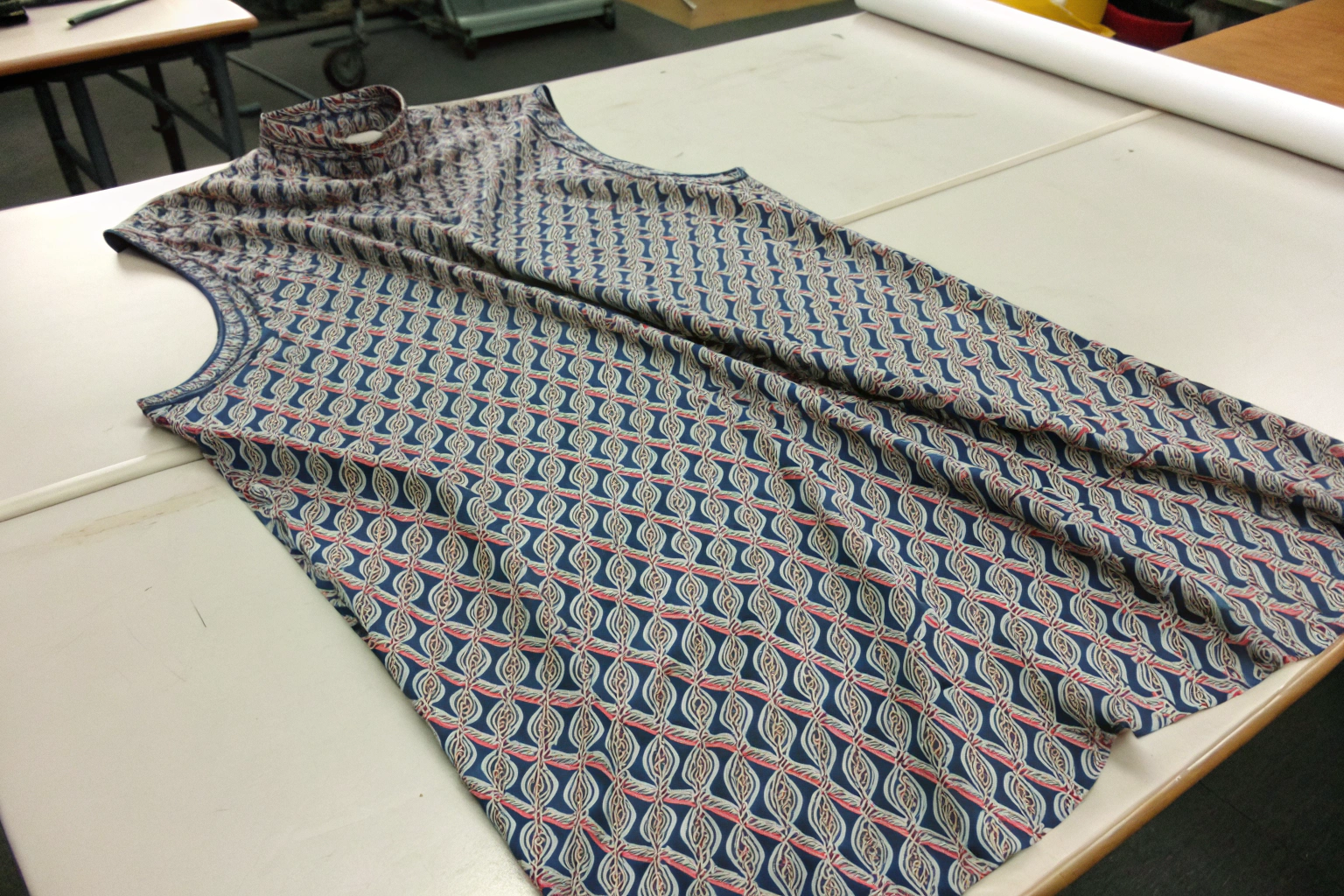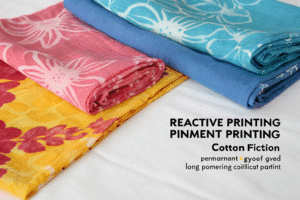Have you ever seen a printed garment or curtain where the pattern appears slanted or warped? That’s not a design flaw—it’s often the result of fabric bowing, a common distortion that can wreak havoc on printed fabrics if not corrected before processing. For brands focused on quality, this isn’t a minor issue—it’s a dealbreaker.
Fabric bow correction ensures that printed patterns remain straight and aligned across garments or home textiles. Without correction, the misalignment caused by bowing can result in visual defects, production waste, and costly rejections.
At Fumao Fabric, we correct bowing issues at the weaving and inspection stage, especially for clients in Europe and the U.S. who demand precise pattern alignment. In this article, I’ll explain what fabric bowing is, why it matters for printing, and how you can ensure your supply chain corrects it before it costs you.
What Is Fabric Bowing and How Does It Occur?
Fabric bowing is a weft distortion where the horizontal yarns curve across the width of the fabric instead of staying perfectly straight. It typically shows up after weaving, dyeing, or finishing when tension imbalances cause the fabric grain to shift.
This distortion causes printed patterns—like stripes, checks, or engineered graphics—to appear crooked or misaligned, especially across large widths.
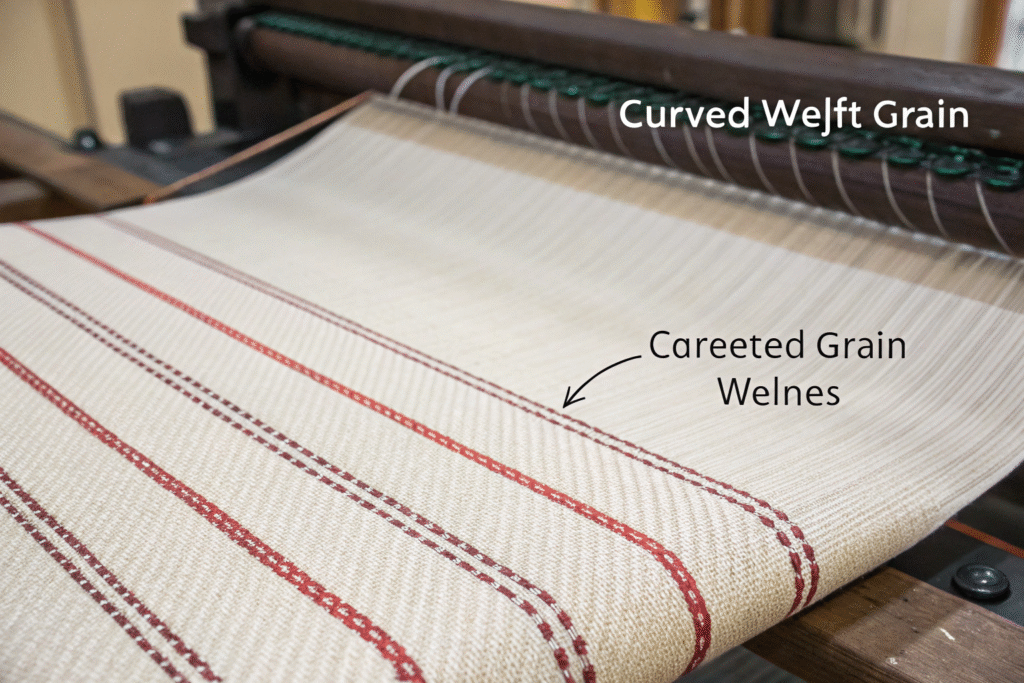
What Are the Types of Fabric Bowing?
- Bowing (Center sag): The weft yarns dip down in the center like a bow.
- Skewing (Diagonal shift): Weft yarns are slanted across the fabric width.
Both can affect printing accuracy, but bowing is especially critical in rotary or digital printing, where design registration must follow precise guides.
You can learn more about bowing types in AATCC standards or through guides like Textile School.
What Causes Fabric Bowing?
- Uneven warp tension during weaving
- Improper batching before printing
- Aggressive mechanical finishing (e.g., sanforizing, calendering)
- Loose storage on rolls
Bowing often worsens in lightweight and stretch fabrics like rayon, chiffon, or polyester knits, especially during humid storage.
Why Is Bow Correction Crucial Before Printing?
Precision is everything in printing. Whether you're creating high-end fashion prints or decorative home textiles, pattern alignment is key to brand perception. Even a few centimeters of bowing can shift patterns off-center across garments, panels, or curtains.
Correcting bowing before printing ensures that design motifs align correctly on finished products, avoiding costly reprints and returns.
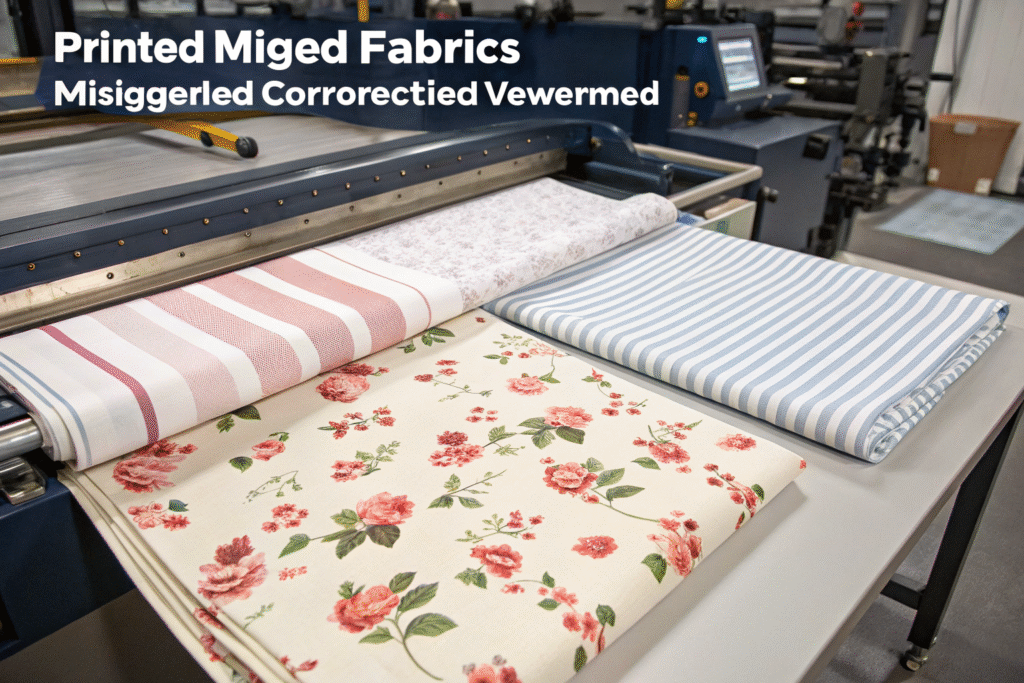
What Happens If You Print on Bowed Fabric?
- Design elements will shift or break at seams
- Garments may look twisted even if sewn accurately
- Home textiles may have crooked panels
- Retailers may reject bulk shipments due to quality issues
This is especially problematic for engineered prints, placement graphics, and panel prints—popular in womenswear, kids’ fashion, and drapery lines.
Major apparel groups like Inditex and PVH Corp have strict tolerances for print alignment. Working with uncorrected fabric can lead to failed audits or fines.
How Much Bowing Is Acceptable?
Per industry guidelines (e.g., ISO 13644), acceptable bowing is usually less than 1% of fabric width. So for a 150cm roll, that’s about 1.5cm. Beyond that, corrective action is essential.
How Do Factories Correct Fabric Bowing?
At our mill, we use bowing correction machines that realign weft threads via synchronized rollers and optical sensors. This is done before the fabric reaches the printing section. Manual corrections are sometimes made for delicate materials using tension-controlled steam chambers.
Professional mills correct bowing using specialized machinery that realigns the weft to the warp without damaging the fabric surface.
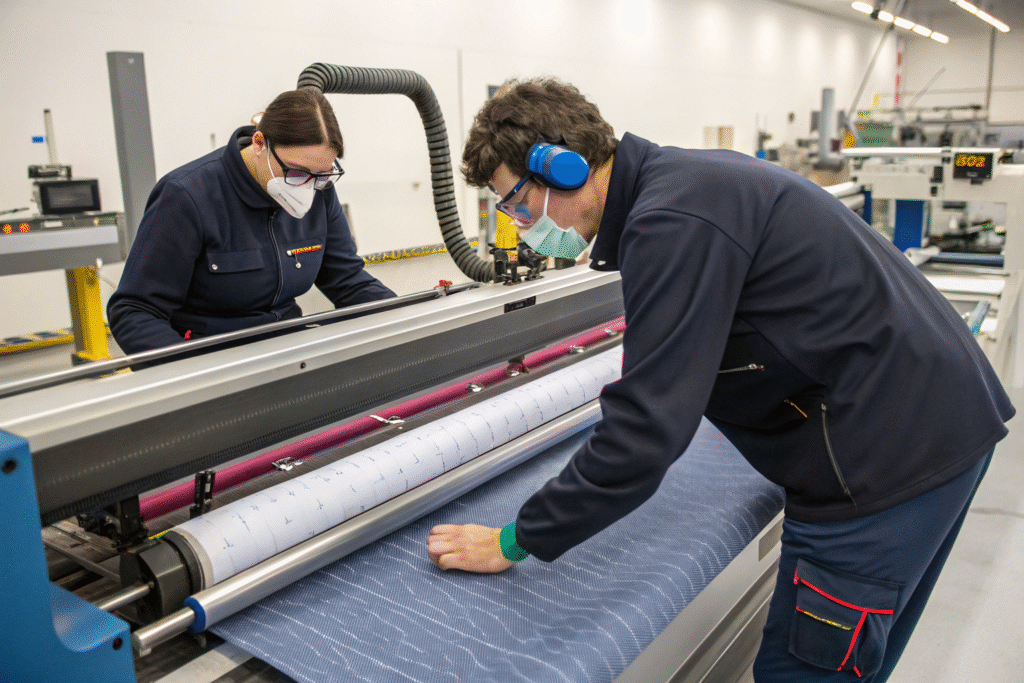
What Equipment Is Used?
- Fabric Bow Straighteners
- Laser Alignment Systems
- Roller Tension Control Machines
- Infrared or Vision Inspection Scanners
These tools detect and adjust deviations in real-time. Some advanced machines use AI to predict tension imbalance and auto-correct on the fly.
Reliable manufacturers like Mahlo GmbH or Bianco Textile Machines produce industry-grade correction systems used in export-grade finishing lines.
Is There a Manual Correction Method?
Yes, but it’s slower. Skilled operators use batched steam and weighted edge tensioning to gradually shift the weft. This is often used for small-batch silk, chiffon, or high-end printed cottons.
At Fumao Fabric, we apply manual techniques for orders under 300 meters or for special treatment fabrics that cannot be passed through automated rollers.
How Can Buyers Ensure Bow Correction Is Done Properly?
For brands and importers, verifying bow correction is part of quality control. You should ask your fabric supplier for:
- Fabric Bowing Inspection Report
- Printed Strike-off with Grid Reference
- Lot Photos or Videos of Correction Machine
- Fabric Width-Deviation Certificate
Buyers should include bow correction in technical specifications and verify through lab dips, strike-offs, or factory audits.
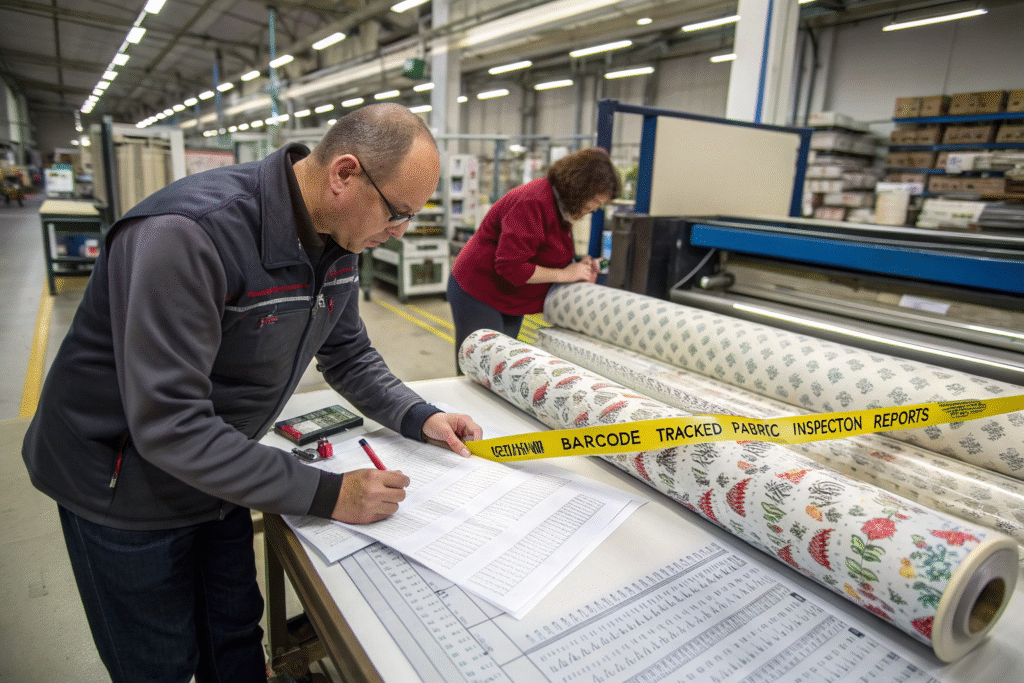
What Should Be in the QC Report?
A proper bow inspection report includes:
- Fabric width and length
- Maximum bow deviation (in cm or %)
- Visual evidence of correction (photo)
- Test method used (ISO, ASTM, or AATCC)
We embed this into a QR-linked digital inspection log, which buyers can scan and verify from anywhere.
How to Build It Into Your Supply Agreement?
Include clauses like:
“All printed fabric must meet bowing tolerance of <1% across width. Supplier must provide correction documentation and accept rejection if deviation exceeds limit.”
This ensures your supplier takes correction seriously, and it avoids post-production disputes. Legal textile templates can be found at Fibre2Fashion or Sourcemap.
Conclusion
Bowing might seem like a small defect—but in printed textiles, it’s a big deal. From visual misalignment to rejected shipments, uncorrected bowing can cost your brand thousands. The good news is that with proper correction systems and supplier transparency, you can avoid these risks entirely.
At Fumao Fabric, we integrate bow correction into our production line—combining machine calibration, manual verification, and test reporting to ensure your printed designs come out just as you envisioned. Ready to print with confidence? Contact our Business Director Elaine at elaine@fumaoclothing.com and let’s make every print picture-perfect—no slant, no skew.

